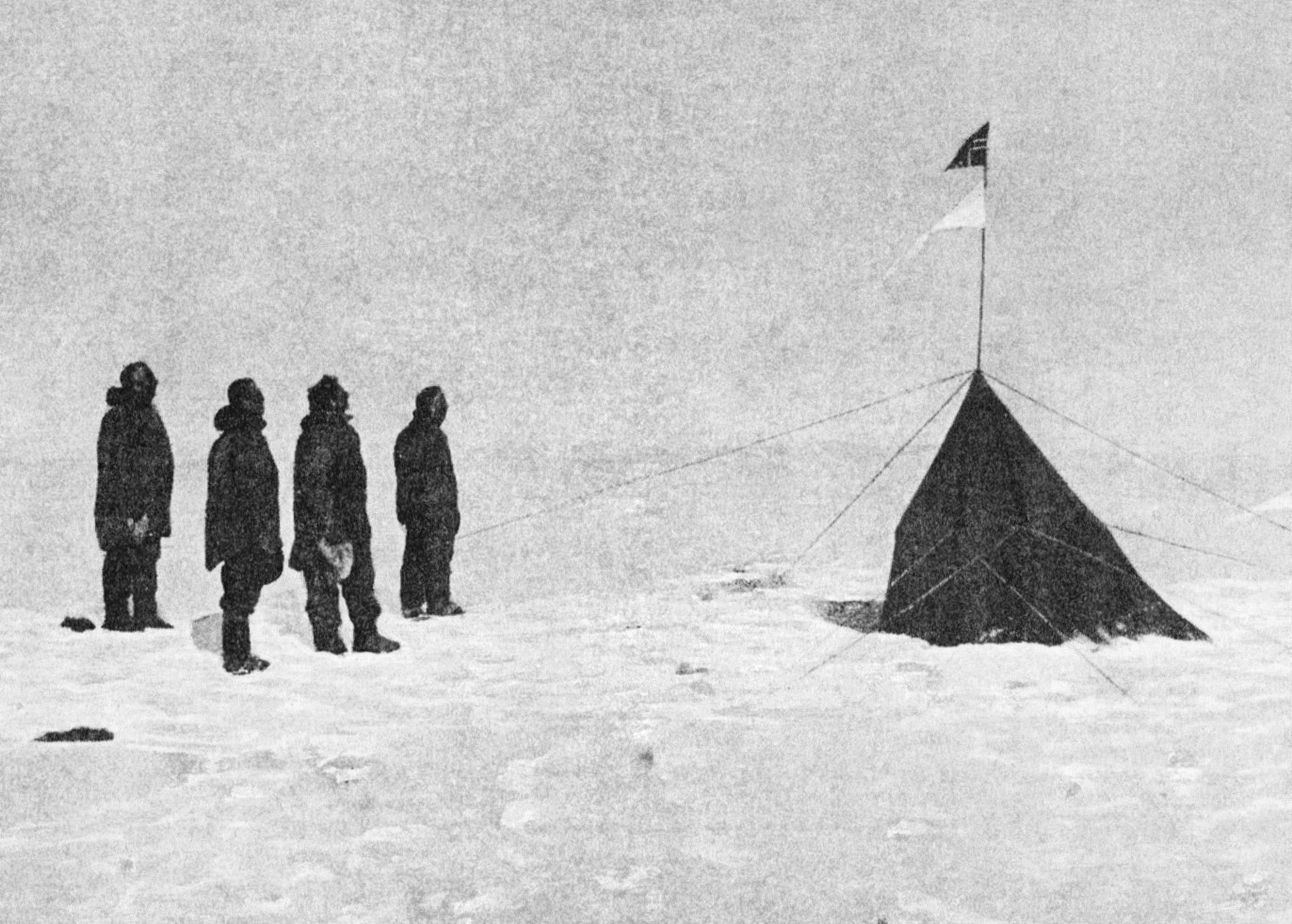
Figure 1 – Roald Amundsen, Helmer Hanssen, Sverre Hassel and Oscar Wisting (l–r) at the South Pole standing before “Polheim”, the tent erected at the South Pole on 16 December 1911. Photograph by Olav Bjaaland, the fifth team member. Originally published in Amundsen’s “The South Pole.” From the Wikicommons and in the public domain.
All this discussion about great South Polar photographers begs the question what was the first photograph taken at the South Pole? It was not taken by either Herbert Ponting or Frank Hurley. But I get ahead of myself.
The English polar explorers were unquestionably leaders in scientific exploration. But if you wanted results, namely the achievement of a goal, the Norwegians were a force. And most formidable among them was Roald Engelbregt Gravning Amundsen (1872 – 1928). By 1910, Amundsen has already led the first expedition to successfully traverse, the until then fabled, Northwest Passage across Canada between the Atlantic and Pacific Oceans (1903-1906). One of our readers has commented how often a polar expedition has come to be labeled as ill-fated. Amundsen’s South Pole Expedition (1910-1912) was anything but ill-fated. It’s story is both legendary and remarkable.
After his Norrthwest Passage Expedition, Amundsen set his eyes on the North Pole. He organized his North Polar Expedition and June 3, 1910, he set sail from Oslo. His ship was the famous Fram, previously used by another great Norwegian polar explorer, Fridtjof Nansen. Amundsen learned that in 1909 two Americans, Frederick Cook and Robert Peary, separately claimed to have reached the North Pole. At Medeira, he revealed to his crew his audacious plan. The North Pole had already been claimed; they would head South. And he sent a simple telegram to Scott:
"BEG TO INFORM YOU FRAM PROCEEDING ANTARCTIC--AMUNDSEN."
They reached the eastern edge of the Ross Ice Shelf on 14 January 1911, where Amundsen established basecamp. Amundsen adopted Eskimo-style skin clothing, instead of the wool clothing worn by the English. He used skis and dog-sleds. He was an expert logistical planner. In Amundsen’s own assessment in his book “The South Pole:”
“I may say that this is the greatest factor—the way in which the
expedition is equipped—the way in which every difficulty is foreseen,
and precautions taken for meeting or avoiding it. Victory awaits him who
has everything in order — luck, people call it. Defeat is certain for
him who has neglected to take the necessary precautions in time; this is
called bad luck.”
Amundsen’s team, consisting of Olav Bjaaland, Helmer Hanssen, Sverre Hassel, Oscar Wisting, and Amundsen himself, departed on October 19, 1911, with four sledges and fifty-two dogs. On December 14, 1911, the team neared the pole. Amundsen’s men held back in favor of their leader. There should be no doubt who was the first man to obtain the “The Great Southern Nail.” They arrived more than a month before Scott and his team. They left a small tent and letter stating
their accomplishment. This was just in case they did not return safely home. They returned to basecamp with eleven dogs, and their great success was announced on March 7, 1912 when they arrived at Hobart, Australia.
As I said, Amundsen was single minded in his attack on the Pole. There was no science only committment and exploration. They are known to have taken few photographs of the event. Figure 1 shows the men standing before the Norwegian Flag on the tent that they left at the pole.
As a curious side note, in 1926 Amundsen was among sixteen men who made the North polar crossing in the dirgible “Norge.” There had been three previous claims to the North Pole: that of Frederick Cook in 1908; of Robert Peary in 1909; and of Richard E. Byrd in 1926. All of these are all disputed, either because of questionable accuracy in navigation or because of outright fraud. As a result, it may well be the case that Amundsen was also among the first group of men to attain the North Pole.
Unfortunately, in the end, Amundsen was indeed ill-fated. He disappeared on June 18, 1928 while flying on a rescue mission looking for missing members of the Nobile’s crew, whose airship had crashed, while returning from the North Pole. In 2004 and again 2009 the Royal Norwegian Navy unsuccessfully searched with an unmanned submarine for the wreckage of Amundsen’s plane.

Pingback: The immediacy of photography and the view from the bottom of the world | Hati and Skoll Gallery